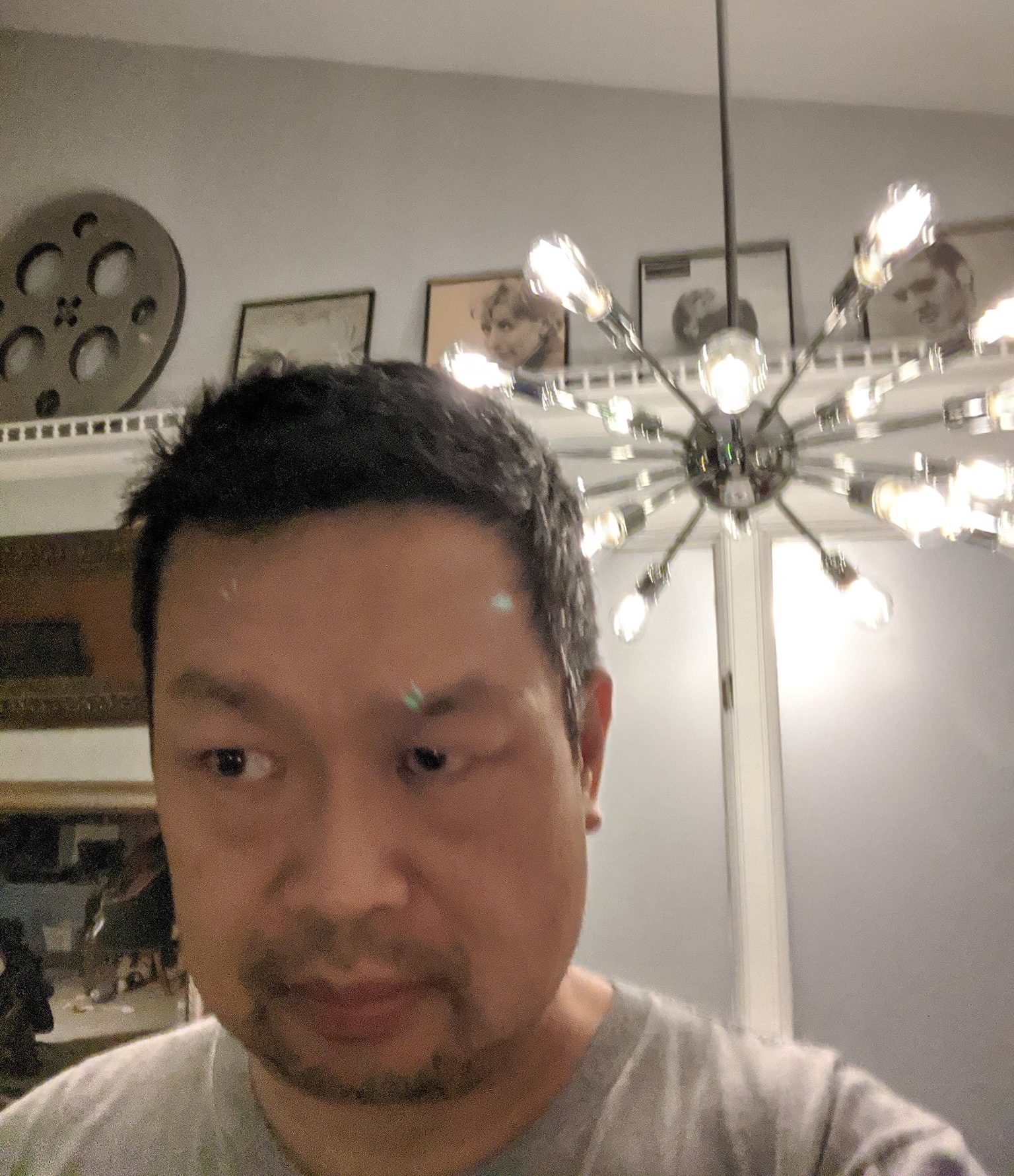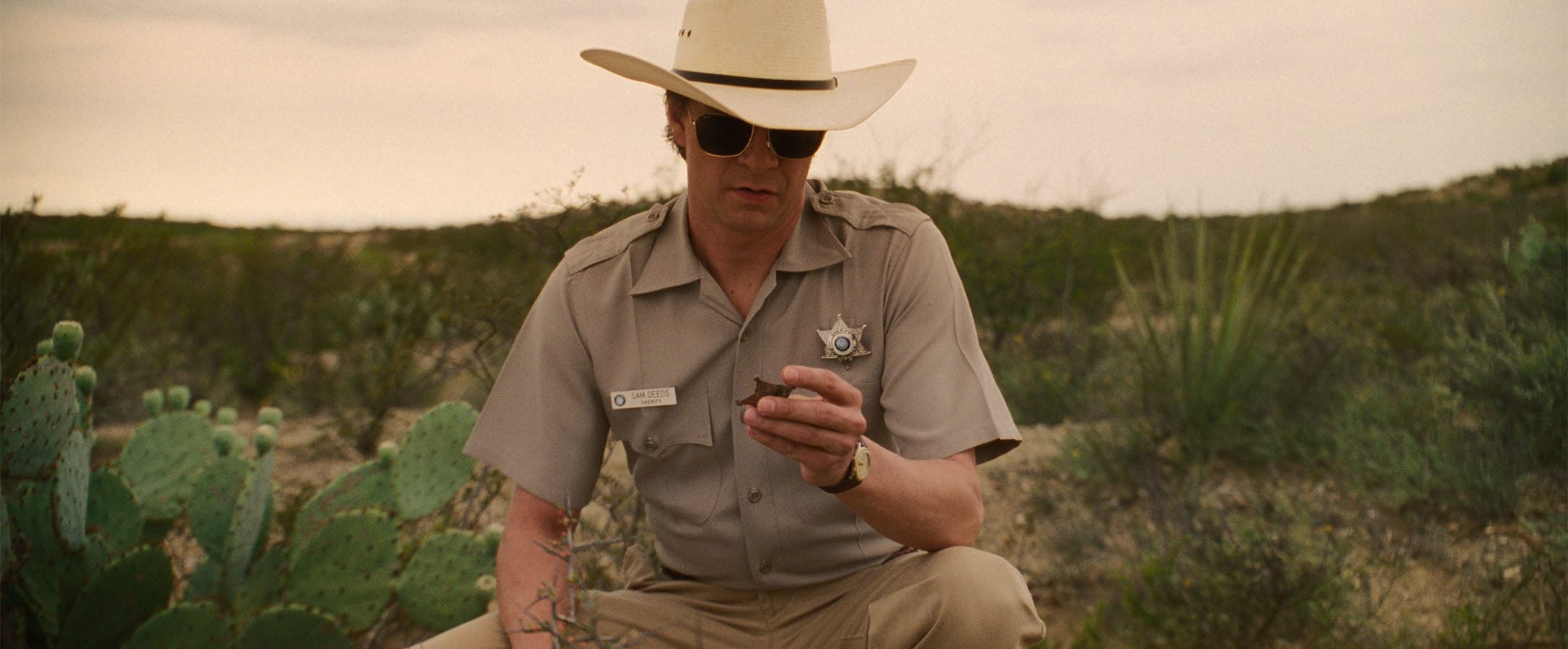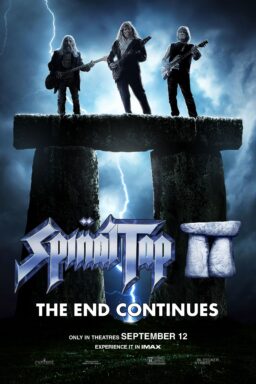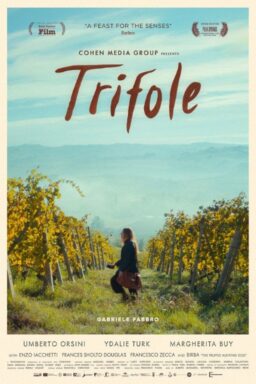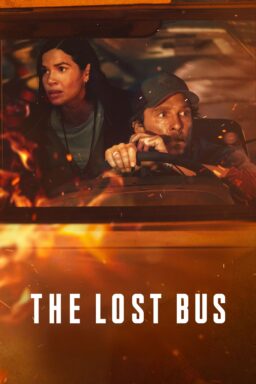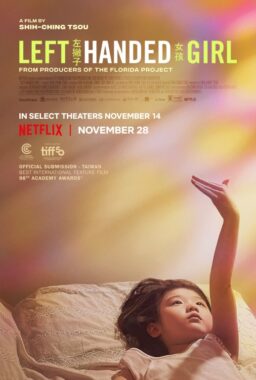John Sayles’ films are indicated by the quality of his listening. His scripts are dialogue-dense and populated by people of character and intelligence, representing every social strata, every race, every creed. He puts them in conversation with one another, and then he listens and we listen with him. A child of educators, Sayles earned a degree in psychology from Williams College and then moved to Boston where he worked as, among other things, a meatpacker while writing short stories and, eventually, a novel called Pride of the Bimbos (1975) about a diminutive player in a traveling baseball team. With the incongruous mix of satirical ferocity and disarming geniality mastered by authors like Kurt Vonnegut, Jr and Tom Robbins, Sayles’ challenged the tribalism and machismo that animate this country’s sports culture. From the beginning, he had his finger, gently, on the pulse of our societal demons.
He started writing scripts for Roger Corman not long after, producing all-time classics for the legendary producer like Jimmy Murakami’s “Battle Beyond the Stars,” Lewis Teague’s “Alligator” and two astonishing pieces with Joe Dante, “Piranha” and “The Howling.” He took some of the money he earned and poured it into his own directorial debut, the still poignant “Return of the Secaucus Seven” (1980) shot over a weekend with his friends playing a group of college pals unearthing old hurts, rekindling old desires and combing over the way things used to be. This obsession with the past, with the stories that places hold, with the stories that people tell that can ossify into folklore and legend is a key thread to pull in Sayles’ work: as principled and moral a filmography as any ever produced by an American director. Always anchored by humanity, ever-curious, attentive and observant, for me and for all of Sayles’ great pictures like his historical dramas “Matewan” and “Eight Men Out,” the lilting “The Secret of Roan Inish,” the intimate “Passion Fish,” the film that best showcases everything that makes Sayles an artist of great importance and undeniable poetry is his 1996 masterpiece “Lone Star.”
Criterion has restored “Lone Star” for a 4K UHD release, starting their 2024 slate off with a considerable bang. I was pleased to talk with Mr. Sayles about one of my favorite movies of all time over Zoom, the second time I have interviewed him after the “Silver City” festival run twenty-two impossible years ago. So I started, appropriately enough, by asking him about the past.
JOHN SAYLES: Yeah, I think, you know, for me, a lot of what I started thinking about when I was writing it is how none of us get to start from scratch. We’re born into a certain place, a certain time, a certain class, a certain race and each milieu has its official story. And that’s what we get. It’s our lot, our responsibility, it’s our job, I think, to look outside of what we were born into and say, “Is what I know really all that’s going on?” It’s our job to look out from that and say, “Oh, there’s other ways of living and that creates other ways of thinking.” I talked to Chris Cooper about playing Sam Deeds by saying you’re a guy who grew up in this place, this bordertown in Texas, and it has its legends and your father is one of them. But what if you’re uncomfortable with your father’s legend because you have this animus against him because of him breaking up your romance when you were a kid. What if you’re suspicious of him so when you go out and do this detective work, you develop a theory about what you now think is a murder that happened some 27 years ago that maybe your dad had something to do with … I mean, you’re asking your dead father where were you on this date and what were you doing? But what you’re really asking is what kind of human being was my father? What kind of human being am I?
The sins of the father, generational trauma.
Yes, this father and son thing always kind of works as a metaphor for people reckoning with the legacy left by the generation before them. We should always be interrogating the official story we’ve been handed down from our fathers, from our teachers, from our government, or whatever. And what happens when you start poking around in it with an open mind?
The danger of stories that purport to seek the truth is that they could tip into didacticism. How do you avoid that?
I think one of the main things you have to do is you realize that, you know, all this stuff is happening, but we’re busy living our lives. We have an election coming up. It’s going to be important, and it’s still not the only thing on our head. At a party or you get together with some friends and you may start to talk about politics but it’s not our everything. People have their lives, their personal problems. They have their jobs. They have to plan meals, you know, pick up the kids, you concentrate most of the time on those things in front of you so it’s important to not make a film where everyone only walks around talking about big truths and the issues of the day. Rather, find your exposition through those people about their everyday lives and it may be several characters who between them tell you a full story of a time and place, not just one making a speech. I didn’t want “Lone Star” to be the guy who explains why the killing happened, like at the end of a not very good mystery story.
Boring.
That’s just it. If you’re just driving, driving, driving to solve the mystery… you have to build characters living their lives and in doing that you’re not only getting away from the didacticism trap, you’re going to get the audience involved when they recognize other human beings. It’s not “whodunnit” but “what’s going to happen to them now?” Movies that make me wonder about the lives of the characters outside of the frame… that’s when I really feel like I’m hooked into a movie is the moment I want to know what’s going to happen to these characters. Whether I like them or not, I want to know what’s going to happen to them next.

You often deal with not just a handful of people, but groups of people in separate orbits from one another.
Yes, that’s one of the things I always try to do, and that a lot of our movies are about: groups of people and how those people don’t necessarily know that their lives affect other groups of people. They may in fact think, “Oh, you know, those people live on the other side of the line,” or “That’s not my group and that’s not my religion or my race,” and therefore they must be some detached, unknowable thing. But we’re all connected. We’re all influenced by what others do. I hope that when the audience sees this picture, they realize, “Oh my God, these people are connected whether they know it or want to admit it or not.” That’s what makes for a nice, interesting puzzle as you’re writing.
Do you plan their connections?
Literally, I write down the names of the characters and, literally, I connect the dots–just draw a line from one to the next so I can see it. Very often I’ll start and think “well, this person’s only going to have one connection,” but as I sketch in these people and these relationships, suddenly this person will have three or four connections. Maybe they’re the center of it and you didn’t know, you know, they’re really glued into this story. Like the mother who runs the restaurant in “Lone Star,” who Miriam Cologne plays: she’s the mother of one of the other characters but she’s also an immigrant. And she’s also the mistress of, you know, Buddy Deeds, our hero’s father and wait, she was also involved in separating these young lovers, Sam and Pilar, when they were kids and then she’s turning away th immigrants making the crossing that she made over the Rio Bravo there so she’s got all these connections. So maybe the way I’m writing her now is how burdened she is, how she’s uncomfortable with even other immigrants because there’s maybe something shameful about it.
I noted some of that with my own parents–that element of we’re here, and it was hard, and please don’t make these people who only begrudgingly accept us, associate us with you who are fresh off the boat.
Yes, who you are in some way is supposed to remain a secret. There’s a lot to lose now so a lot to protect. When I talked with Miriam for this role, I said you’ve kind of hardened your heart about people crossing the border. You did it, but you know, you’ve got this thing, and you feel like you’ve accomplished something that’s precarious so you feel like it has to remain a secret. Certainly not for everyone, but for some naturalized immigrants there’s that fear that never goes away that it could be taken away from you. It’s always a double-edged thing. I grew up with a lot of Italian kids and their parents still spoke Italian at home, but they didn’t want the kids to learn, partly because they wanted them to become Americans and partly for a lot of complicated tensions between shame and fear.

My parents only taught me to speak Mandarin at home. They wouldn’t teach me English because they didn’t want me to learn with an accent. Asian accents are hard even now for native speakers to take seriously. Speaking of intolerance, “Lone Star” is 28 years old this year, but it feels like it could have been made yesterday.
Yeah. I mean, that board meeting in “Lone Star,” I just saw it the other night, they played it at the Egyptian theater. That could be yesterday. That’s still happening and in many states it’s becoming the law. We’re codifying ignorance and intolerance. Codified law that declares “No, you cannot teach the truth.”
One of the stunning things about “Lone Star” is how it deals with the possibility that some truth, though, is bad.
At the time that I was writing the movie, you know, the former Yugoslavia was falling apart, and you would hear people say, well, we’re killing them because they stole our land back in 1300. And you’re going, oh my God, they’re killing each other because of this ancient story that, true or not, is not useful anymore in determining the fate of real people who are alive right now. It’s actually harmful. So let’s look into that legend and maybe, you know, push it aside a little bit or actually revise it and tell more of the truth about it so we can understand the real, humane, lessons it’s trying to tell. We are a truly fraught place. We’re so fractured. Here’s a line and when people are on this side, they’re this and on this side, there’s that and no one is crossing those lines anymore. There are so many belief systems running around that any kind of unity even over issues of reality is so fractured. It makes the idea of ever having a unified country very, very difficult.
“Lone Star” is ultimately a hopeful film. Where do you find hope now?
Oh boy. You know, maybe it’s when you talk to some young people who don’t accept the official story, you know, who are looking into it and becoming radicalized behind the right causes. Which is not to say the young aren’t prone to grabbing onto something that’s pretty raw, but if they can keep an open mind. I think the reaction to the abortion laws has been really positive, how women have gotten out and just said, no, this won’t stand. Any time people are able to demonstrate empathy for others experiencing things they aren’t and might never experience themselves – there’s hope in that. I do find hope, but it, but you know, we’re in a dangerous place. It’s hard not to feel like the problem isn’t one little group anymore. It’s a lot of our population that’s the problem–the ones who are obvious, but also the ones who don’t want to deal with what’s really going on. When we’re afraid, we grab onto these narrow belief systems full of magical thinking and a lot of really retrograde thinking in them, too, a lot of bigotry and ideas that aren’t very well thought through or based on experience and reason.

Can you talk to me about the conversation between Sam and Pilar on the banks of a river that transitions to them as children? It reminds me of that Heraclitus quote about never being able to step in the same river twice.
Yeah, we literally shot it at the Rio Bravo, the Rio Grande, and you know several times in the movie I have characters talk about the line between things, you know, and that line may be a border, it may be a race, it may be a rule, like you’re not supposed to marry your relatives, you are defined by those lines drawn around you and between us. What’s on the other side is one thing, and what’s on this side is something else, and they can never mix. I drove out here to California and we stopped and we looked at the border wall, which looks like a very beautiful Cristo art installation thing. It’s cost us billions of dollars. It’s not really doing us much good. But it is symbolic to a lot of people of lines and therefore the security of our interior spaces so we’re, you know, dumping all this money into it to keep the loudest a little quieter. But that’s all it does, serve as a meaningful symbol to a lot of people. But what if we spent this energy feeling each other out about how these lines truncate our humanity? is it possible to erase that line between what our parents have wanted to segregate, that keeps us from experience and has widened the distance between us? It’s easier to build a tangible wall on an invisible border.
Anyway, we stopped to look at the wall and I was thinking how now we couldn’t do that shot because there’d be barbed wire there, or it would have an even heavier kind of content. It was very, very conscious for us to shoot there. We shot that scene on two different days. The first day we were kind of off and I just said to Elizabeth and Chris, let’s come back and do it again tomorrow. What I wanted from them was that double thing, which is how they’re both thinking about multiple things at the same time: how they used to go down here to be alone together when they were kids and now, what’s the adult me have to do with that kid? What do we mean to each other? Are you thinking about the things I’m thinking about? I wanted them to also think about the possibility for them to get together again and where each of them were in terms of hopefulness about that. I said to them, look, I think you are going to get together, but you’re not going to stay in that town. You’re not going to eat in your mom’s restaurant together, you’re going to have to get some distance and make your own separate piece of that because I never wanted the film to feel like a solution to all of these divisions, these problems. Maybe you’ve done something for yourselves here – you’re not going to let the official story keep us apart. But that doesn’t erase all of our problems.
The line I am most moved by in your film is time. Talk to me about how you depict that border, the one that separates who we are from who we were in “Lone Star.”
One of the main things that a cut does is it says one thing has ended and another thing is starting: especially a hard cut, a transition not on motion. I didn’t want cuts between the present and the past because these people, and we all, are carrying this stuff from the past into our presents. We are who we are because we went through these things and they’re always in our heads. I wrote these as pans and not cuts, worked them all out with [DP] Stuart [Dryburgh] and the grips and the gaffers and everybody else, how to choreograph these movements.Sometimes when you do a master shot like that it can get a little difficult. People are running around behind the camera and changing the look of things and maybe actors are changing clothes or you’re going to have to find a way to make the cut invisible.

How’d you get buy-in?
You basically have to tell the crew “I am committing to this.” [Laughs] I’m not going to shoot any coverage. You’re going to work hard on this thing, but when we get it, it’s going to be really cool, and I’m not going to have an escape route for myself so when you see the movie you’ll never wonder “why did we kill ourselves for that shot? When he, he’s going to cut away to the dog?” My favorite of those was the transition with the tire guy in Mexico, and we kept cutting back and forth between the two of them, and eventually you cut back to the guy who’s telling the story, the guy who owns the tire shop, and the rest of the frame is filled by the sign that is behind him, and what we did is we moved him and the sign, you know, a hundred miles away almost to the Pecos River so when you pan away from him you’re in a totally different place. And we had to figure out where the sun’s coming from and using a measuring tape to see how far we are from the lens, using the same lens and all those kinds of things. I really love those problems to solve so it really cuts very nicely but without being showy. I didn’t want to draw attention to it, I wanted the opposite, to feel like it was just a flow like time or like your river.
Like memory?
Maybe. I think memory is so tough in films. We remember things differently. You know, anybody who works in law enforcement will say you have five people who witness a crime and you’re going to get five different stories.
The Rashomon Effect but no one’s lying.
Yes, and it’s not just where they were standing or whatever, it’s people’s memories that are flawed, biased, and susceptible to influence. Did anybody talk to the witness before they talk to you? When people ask me what art influenced this picture, I always say, well, “The Man Who Shot Liberty Valance,” of course, but really it’s “Oedipus,” the story of when you start digging around, be careful because you may find out something that you don’t want to know. Maybe related to that is if you dig around inside your head, you might remember something you forgot for a reason.
There’s a great line from Oedipus, from Tiresias, that I think of often: “How terrible is wisdom when it brings no profit to the wise.”
Too true. Yeah. You know I’ve made whole movies, like “Men with Guns,” that are just about willful ignorance and what happens when you’re forced to look at something that you didn’t want to know about. What do you do with that, you know? We seek truth but what if the truth is not just something that is hard, but is injurious? Can you go back to being that other person before you remembered? Before you learned? How much effort do you have to expend now to say, “Oh, I didn’t really see that. I don’t really know that.” So many of us are holding our hands over our ears and our eyes now and we’re so short on time.
